Surrealism was a movement, primarily in literature and the visual arts, that flourished in Europe between the First and Second World War. Surrealist artists rejected rationalism and literary realism; and instead focused on channeling the unconscious mind to unveil the power of the imagination. Surrealist paintings often show distorted and dream like representations; unexpected juxtapositions of objects; and real forms mixed with abstract shapes. They are often renowned for their wit and thought provoking nature. Along with Abstract Expressionism, Surrealism was perhaps the most influential art movement of the twentieth century. Here are the 10 most famous Surrealist paintings
#10 The Song of Love
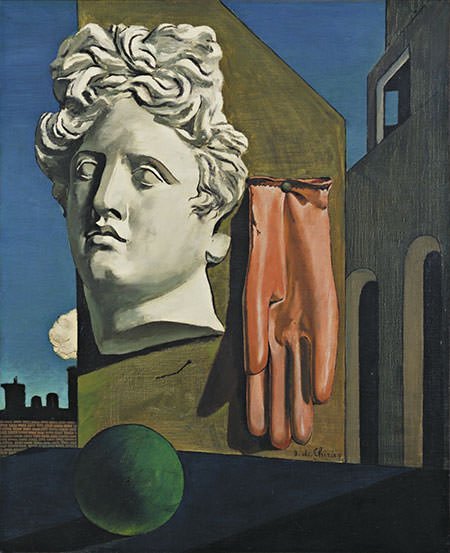
| Location: | Museum of Modern Art, New York City, U.S. |
| Artist: | Giorgio de Chirico |
| Year: | 1914 |
Giorgio de Chirico was an Italian artist famous for his Metaphysical style of painting, which was marked by dream-like scenes with unexpected juxtapositions of objects. The early works of Surrealist artists, including The Elephant Celebes and Mama, Papa Is Wounded!, were inspired by Chirico’s Metaphysical art. This painting depicts an outdoor architectural setting with the main focus being a Greek sculpted head and a surgeon’s glove on a small wall. The Song of Love is considered an early example of the Surrealist style though it was painted several years before Surrealism emerged as an art movement. It is one of the most famous works of Giorgio de Chirico and a prime example of his Metaphysical style.
#9 Forest and Dove
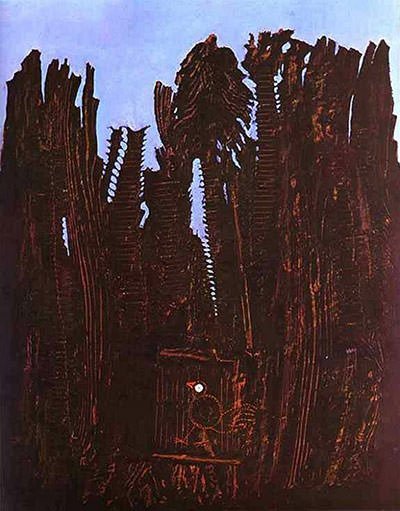
| Location: | Tate Gallery, London, U.K. |
| Artist: | Max Ernst |
| Year: | 1927 |
Max Ernst was a German artist who was a pioneer of Surrealism as well as the Dada movement, from which Surrealism evolved. In this painting, he depicts a nocturnal scene of a forest of bizarre and abstract trees. In the thick of the forest is a childlike depiction of a dove, probably portraying Ernst in his post-war traumatic state. Grattage is a surrealist painting technique, pioneered by Ernst, that involves laying a canvas prepared with a layer of oil paint over a textured object and then scraping the paint off to create an interesting and unexpected surface. Forest and Dove is an influential work in Surrealism as it exemplifies Ernst’s grattage technique; and as the forests and dark enclaves of the painting later became a Surrealist metaphor for the human imagination.
#8 Mama, Papa Is Wounded!

| Location: | Museum of Modern Art, New York City, U.S. |
| Artist: | Yves Tanguy |
| Year: | 1927 |
Yves Tanguy was an influential French surrealist painter. He often depicted vast, abstract landscapes populated with various abstract shapes. In this painting, he shows a cactus-like shape tied to a geometric spider-web, and floating near the horizon. The title of the painting, which was taken from a textbook of psychiatric case studies, complicates rather than clarifies the meaning of the work. There are various interpretations of the painting including it being a reference to the violence of World War I; and that the standing yellow figure may represent a father, the cactus a mother and the amorphous mass a child. Mama, Papa Is Wounded! is the most famous work of Tanguy and one of the best-known paintings of Surrealism.
#7 Self-Portrait: The Inn of the Dawn Horse
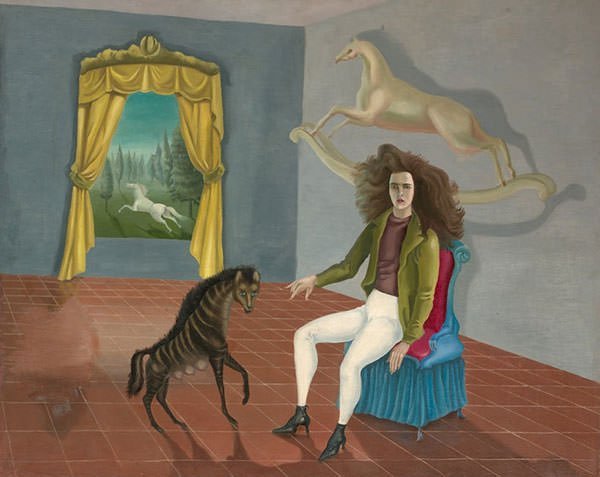
| Location: | The MET, New York City, U.S. |
| Artist: | Leonora Carrington |
| Year: | 1938 |
Considering that renowned Mexican painter Frida Kahlo declared that she was not a Surrealist, Leonora Carrington is perhaps the most famous female Surrealist artist. Unlike the other Surrealists, Carrington was not interested in the writings of Sigmund Freud. She is instead famous for her haunting, autobiographical paintings that incorporate images of sorcery, metamorphosis, alchemy and the occult. This self-portrait, also known as The Inn of the Dawn Horse, is her most acclaimed work. In it, she has painted herself posed in the foreground on a blue armchair with her hand pointing toward a female hyena. A white rocking horse appears to float on the wall behind her head while a white horse gallops freely in the window in the background. The distorted perspective, the mysterious narrative and autobiographical symbolism of this portrait perhaps demonstrate the artist’s attempt to reimagine her own reality.
#6 The Elephant Celebes
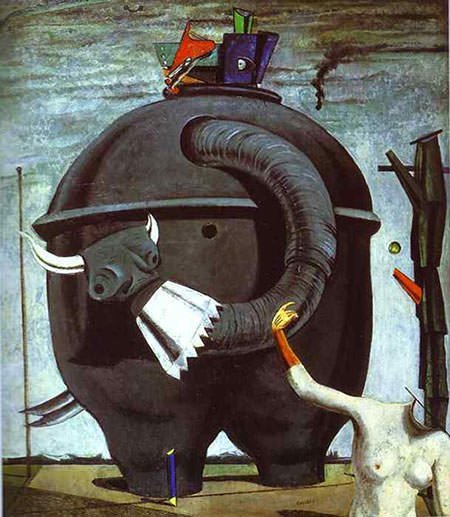
| Location: | Tate Modern, London, U.K. |
| Artist: | Max Ernst |
| Year: | 1921 |
This painting was inspired from a photograph of a Sudanese bin for storing corn; which Ernst has turned into an elephant-like mechanical being. The headless nude woman wearing a surgical glove shows irreverence to the realist art world in which the human form is idealized. There are several other interesting details in the artwork including two fish ‘flying’ at left and a trail of smoke in the right. The Elephant Celebes, with its odd juxtapositions of disparate objects, is based on the Dream Theory of Sigmund Freud. The title of the painting is derived from the opening words of a childish German rhyme with sexual connotations: “The elephant from Celebes has sticky, yellow bottom grease”. The Elephant Celebes is considered one of the earliest masterpieces in Surrealist painting.
#5 The Son of Man
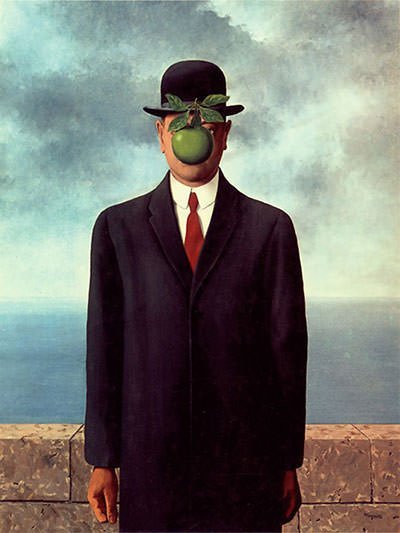
| Location: | Private Collection |
| Artist: | Rene Magritte |
| Year: | 1964 |
Rene Magritte was a Belgian artist who was one of the most prominent figures of Surrealism. The Son of Man, a self portrait of Magritte, depicts a man in an overcoat and a bowler hat but his face is largely obscured by a hovering green apple. His eyes can be seen peeking over the edge of the apple. Magritte said about the painting, “Everything we see hides another thing, we always want to see what is hidden by what we see. There is an interest in that which is hidden and which the visible does not show us. This interest can take the form of a quite intense feeling, a sort of conflict, one might say, between the visible that is hidden and the visible that is present.” The Son of Man is an iconic work of Surrealism which has appeared in popular culture numerous times.
#4 The Harlequin’s Carnival
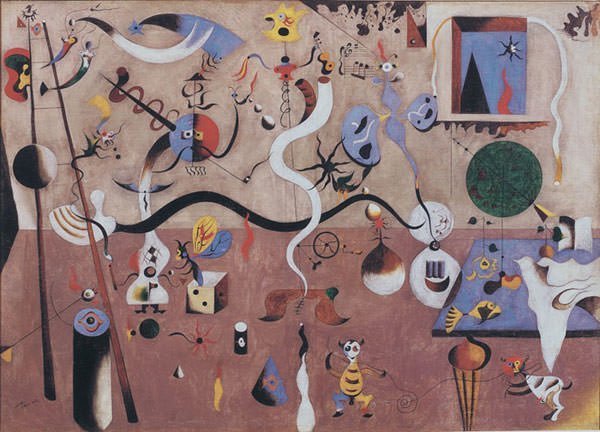
| Location: | Albright–Knox Art Gallery, Buffalo, New York, U.S. |
| Artist: | Joan Miro |
| Year: | 1925 |
Joan Miro was an internationally renowned Spanish Catalan artist who was among the earliest painters involved in Surrealism and his work is also considered a precursor to another influential art movement, Abstract Expressionism. This painting depicts a merry making festival known as Mardi Gras, the celebration that begins the fasting of Lent and culminates on the day before Ash Wednesday. The titular character of the painting, Harlequin, is a person who puts on a disguise for fun, frequently plays the guitar and is usually the victim of unrequited love. Harlequin’s Carnival is seen by art critics as an account of the human subconscious mind. It is considered the highest point in Miro’s personal surrealist style.
#3 Swans Reflecting Elephants
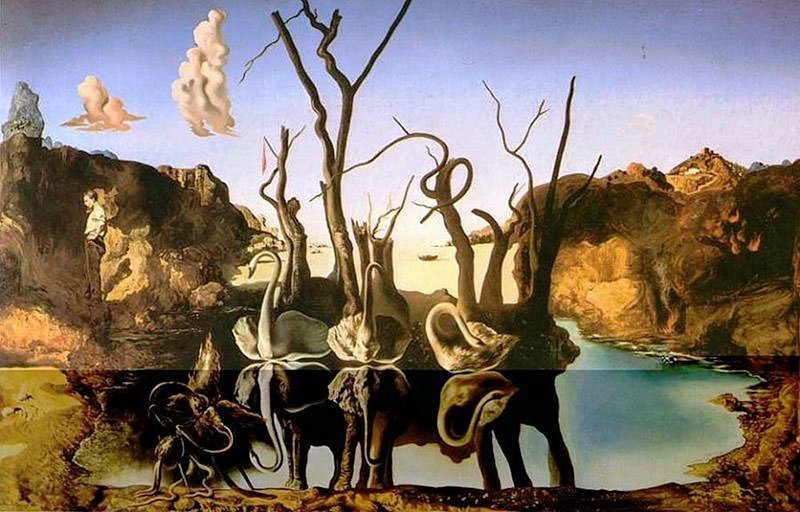
| Location: | Private Collection |
| Artist: | Salvador Dali |
| Year: | 1937 |
Salvador Dali was a Spanish artist who is the most famous Surrealist. Among his contributions is the paranoiac-critical method, which was used to tap into the subconscious through systematic irrational thought and a self-induced paranoid state. Double images were a major part of Dali’s paranoiac-critical method. This painting uses the reflection in a lake to create a double image. The three swans in front of the trees are reflected in the lake so that their necks become the elephants’ trunks and the trees become the legs of the elephants. Swans Reflecting Elephants is considered a landmark painting in Surrealism as it enhanced the popularity of the double-image style. It is the most famous double image created by Salvador Dali; his greatest masterpiece using the paranoiac-critical method; and one of the most well-known works in Surrealism.
#2 The Treachery of Images
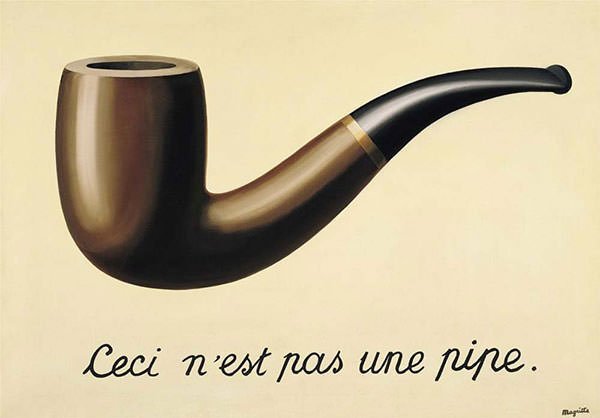
| Location: | Los Angeles County Museum of Art, U.S. |
| Artist: | Rene Magritte |
| Year: | 1929 |
This painting shows a pipe below which Magritte has painted the words “Ceci n’est pas une pipe.”, French for “This is not a pipe.” The statement means that the painting itself is not a pipe; it is merely an image of a pipe. When asked about the famous painting Magritte said, “it’s just a representation, is it not? So if I had written on my picture ‘This is a pipe’, I’d have been lying!” The Treachery of Images belongs to a series of word-image paintings by Magritte from the late 1920s. It was painted when he was 30 years old and is considered a work meant to counter oppressive rationalism. The Treachery of Images is considered one of the most influential masterpieces of the Surrealism movement and it is the most famous painting by Rene Magritte.
#1 The Persistence of Memory

| Location: | Museum of Modern Art, New York City, U.S. |
| Artist: | Salvador Dali |
| Year: | 1931 |
This iconic and much-reproduced painting depicts a scene with watches melting slowly on rocks and the branch of a tree, with the ocean as a back drop. Dali uses the concept of hard and soft in this painting. This concept may be illustrated in a number of ways like the human mind moving from the softness of sleep to the hardness of reality. In his masterpiece, Dali uses melting watches and rocks to represent the soft and hard aspects of the world respectively. The Persistence of Memory has been much analyzed over the years as Dali never explained his work. The melting watches have been thought to be an unconscious symbol of the relativity of space and time; as a symbol of mortality with the ants surrounding the watches representing decay; and as irrationality of dreams. The Persistence of Memory is considered one of the greatest masterpieces of twentieth century art. It is not only the most famous painting of Salvador Dali but also the most renowned artwork of Surrealism.

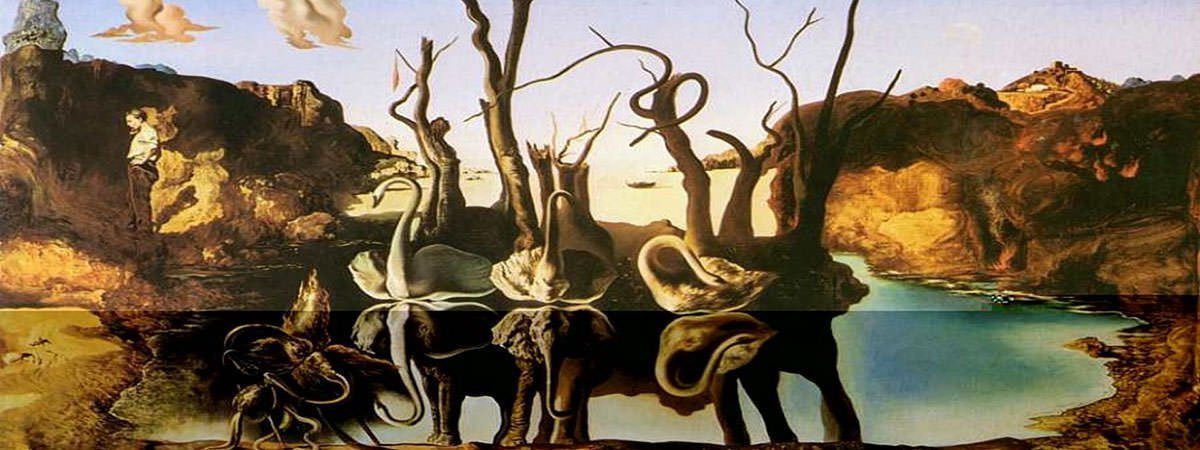
These surrealist paintings show a lot of depth and emotion hidden beneath the surface. Great choice for the list!
Thank You for your appreciation.